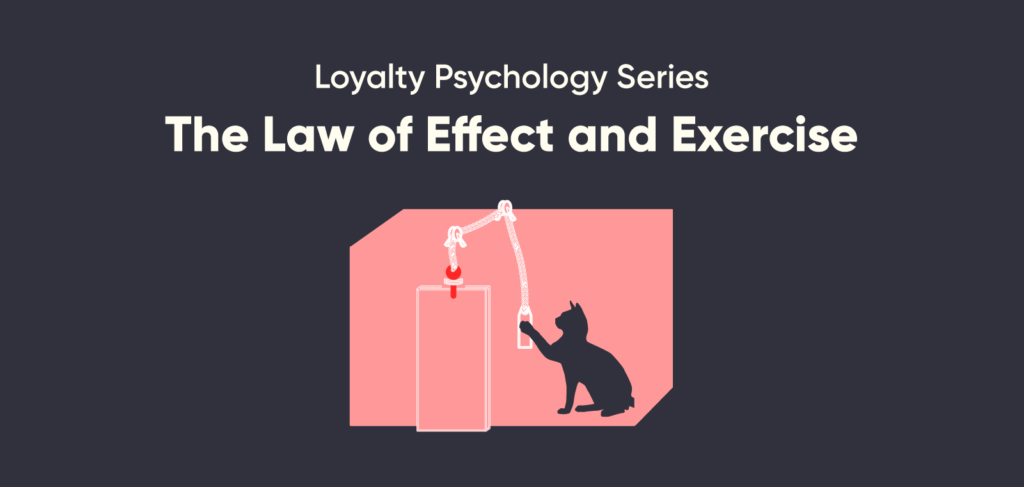
The Law of Effect and Exercise, what is it and how does it relate to business? It sounds like a type of workout.
Many may not know that there are psychological principles behind almost all major decisions within business and marketing. Loyalty programs are no exception to this. A great example is Thorndike’s Law of Effect and Exercise as a primary driver of consumerism. So, what is the Law of Effect & Exercise and how did it change the way the world views consumer behaviour?
Thorndike’s History
Edward L. Thorndike, born in 1874, dedicated his working life to research on animal behaviour [1]. One of his most famous experiments was with cats where he placed them in boxes and timed how long it took them to escape and claim a piece of fish [2]. It was discovered that the cats experimented with different ways to escape the box and eventually correctly escaped. After progressive trials, the cats would learn, adapt their behaviour, and escape the box faster each time. Thorndike first proposed his two theories in his doctoral dissertation in 1911 titled Animal intelligence [3].
The Law of Effect
The Law of Effect states that if a subject commits an action, and is continually rewarded for that, then they are likely to associate the action with the reward and will continue doing that action. The same goes if they are continually punished rather than rewarded, the subject is likely to avoid that action in the future.
The Law of Exercise
As previously mentioned, for the bond to be made between an action and an effect, whether positive or negative, it needs to be done continually. The Law of Exercise states that the more times the action and the effect are linked, the stronger the bond between the two.
Example
So how can the two psychological principles above help with designing a loyalty program?
The main takeaway is that customers will repeat behaviour that they believe is rewarded. This is where a loyalty program comes in, the program can be a tool used to reward customers. Particularly if it is a set reward that customers are aware they will receive for repeat behaviour.
The Country Road Rewards Program (CRRP) is a great example of this. CRRP is a Spend & Save program. The simplicity of this ensures that members know that after they spend, they save money. At all times members can earn a $10 reward when they spend over $100 or a $35 reward whenever they spend over $250. They also have the option to earn additional savings at selected times throughout the year.
This allows the member to understand that whenever they spend over $100, they will receive a reward back. This kind of scheduled reward creates a correlation for the member that they do an action, spend with Country Road, and they receive an effect, money back. This is a key example of the Law of Effect and Exercise.
Conclusion
Overall, an important note is don’t underestimate human behaviour, for it may just be the tactic used to explain why you like your favourite loyalty program and the Law of Effect and Exercise is a great example of this.
[1] Luebering, J. E. 2021, Edward L. Thorndike. Encyclopædia Britannica. Retrieved July 11, 2022, from https://www.britannica.com/biography/Edward-L-Thorndike#ref253228
[2] Shelper, P 2020, Loyalty Programs: The Complete Guide, Loyalty & Reward Co, Sydney.
[3] Thorndike, L., & Bruce, D. 2000, Animal Intelligence: Experimental Studies (1st ed.). Routledge. https://doi.org/10.4324/9781351321044

